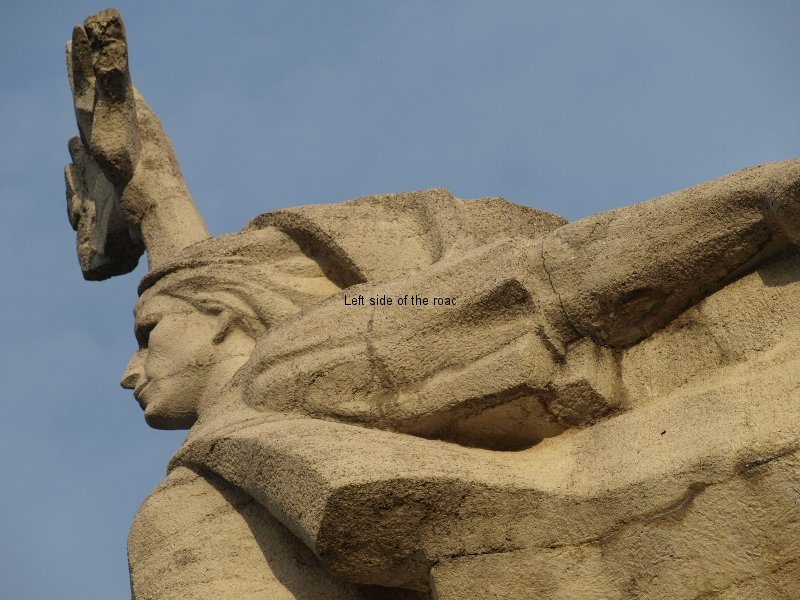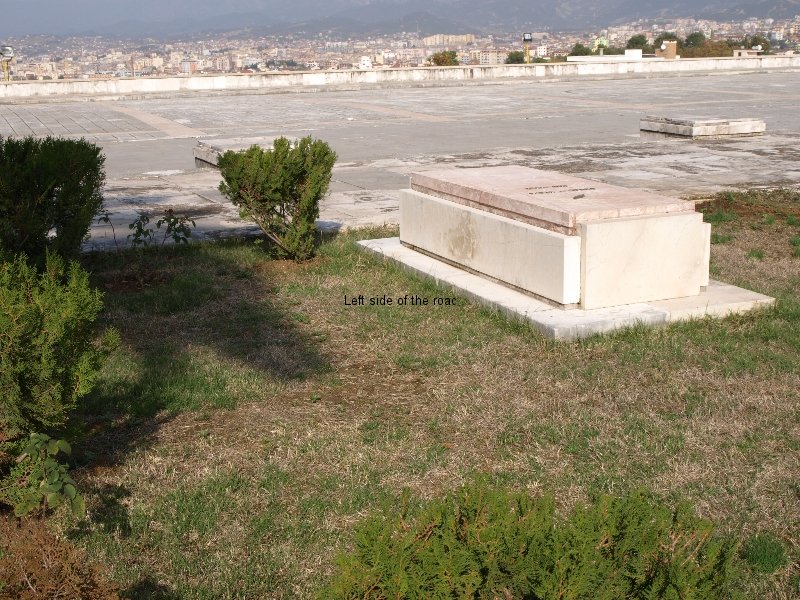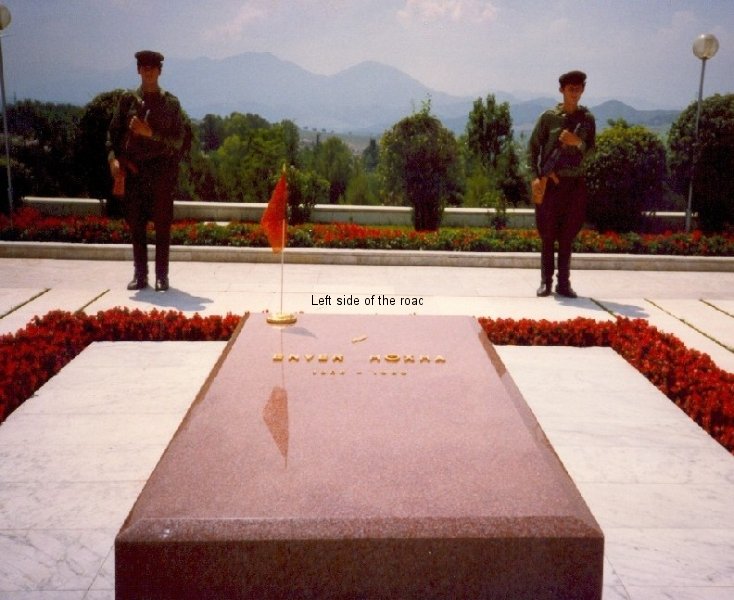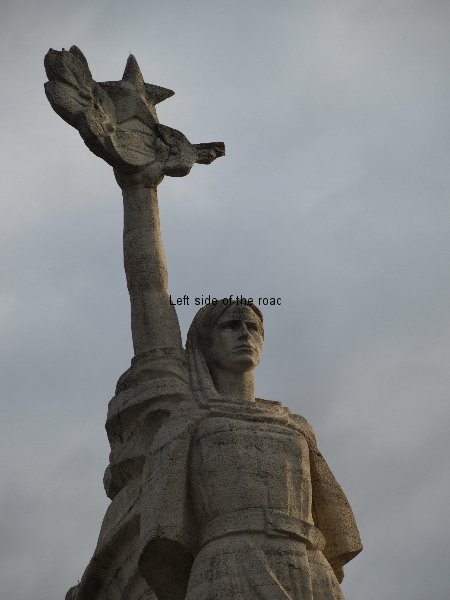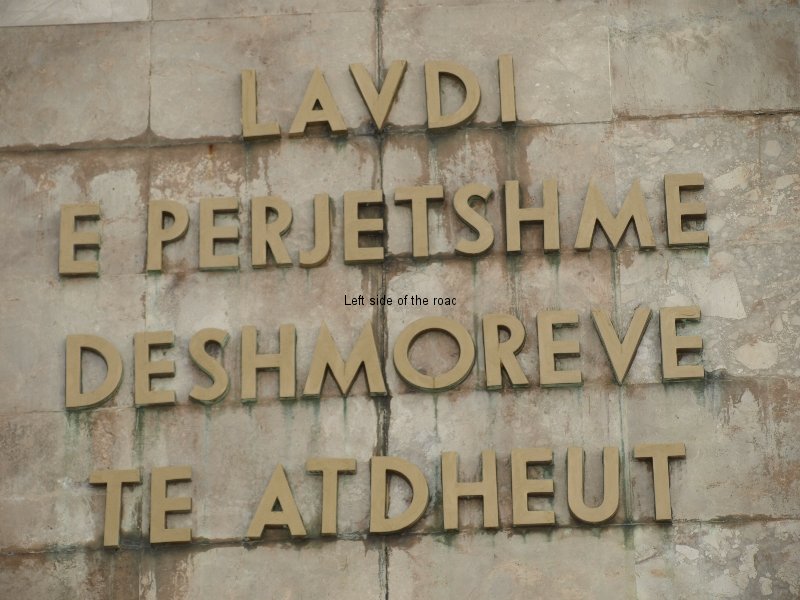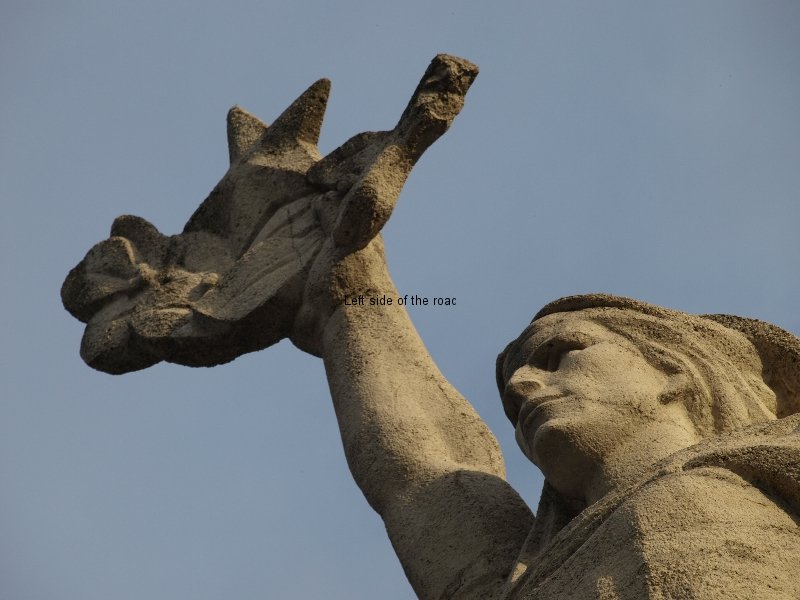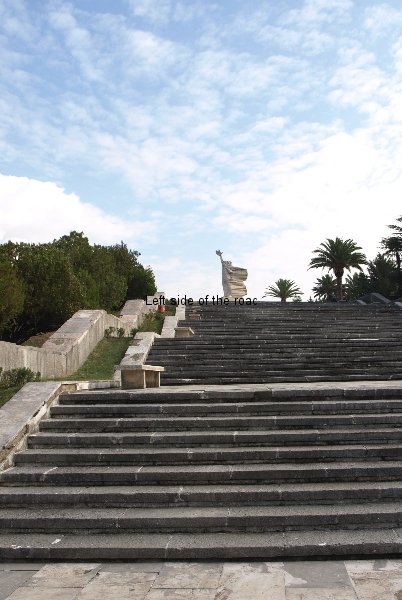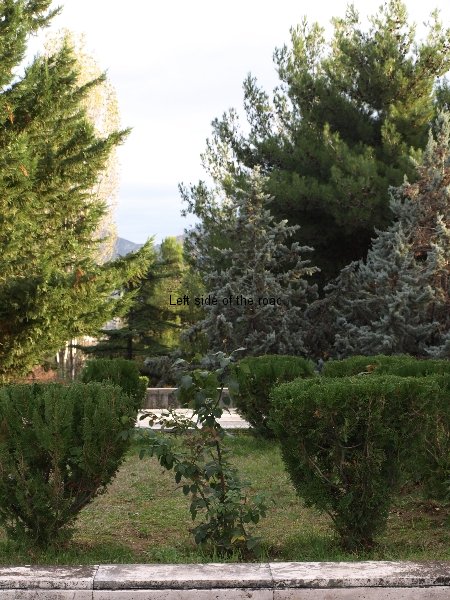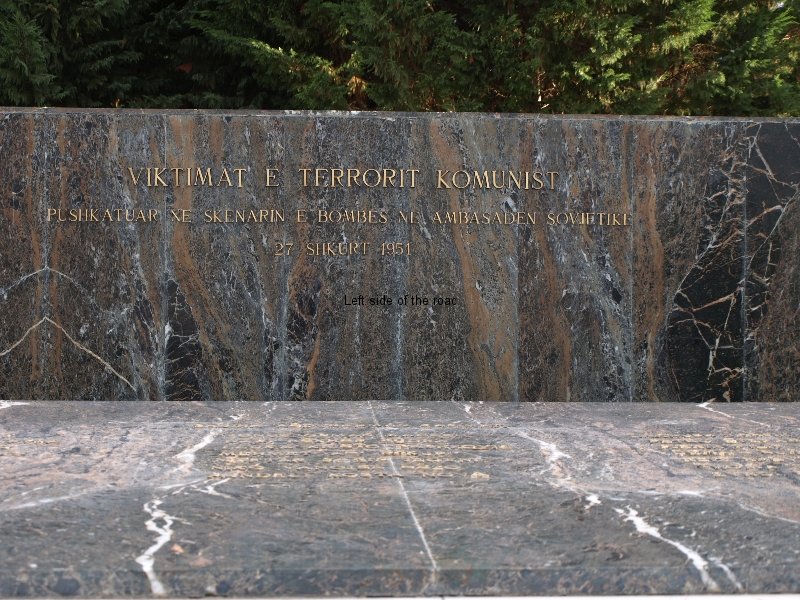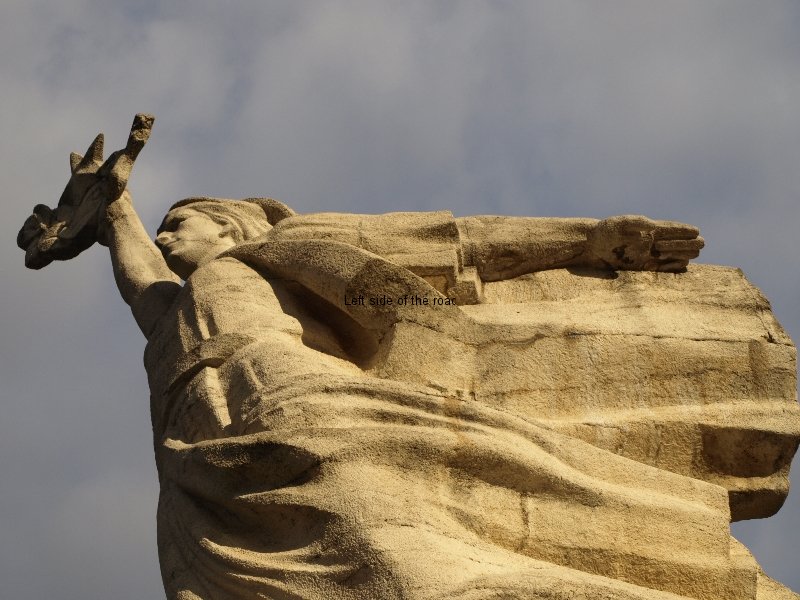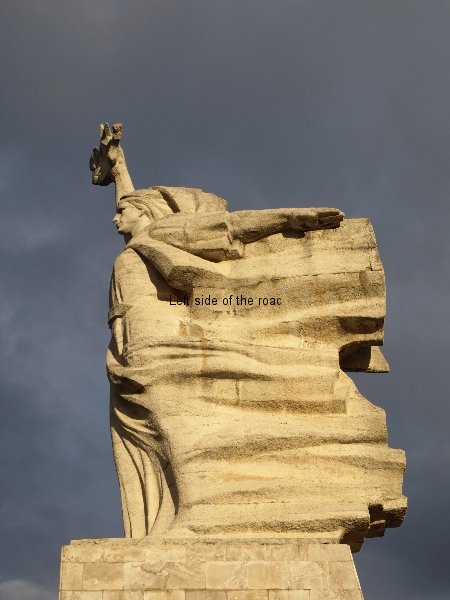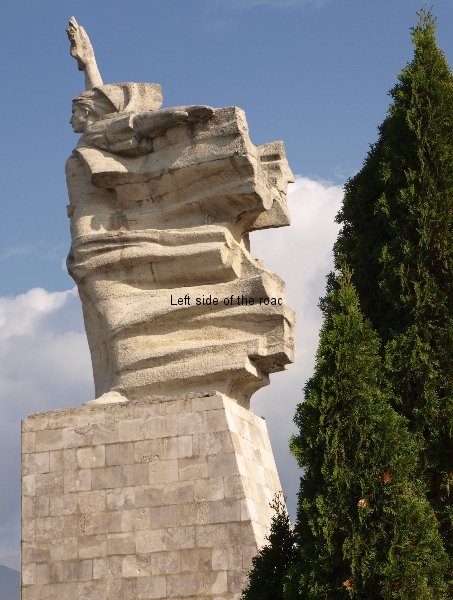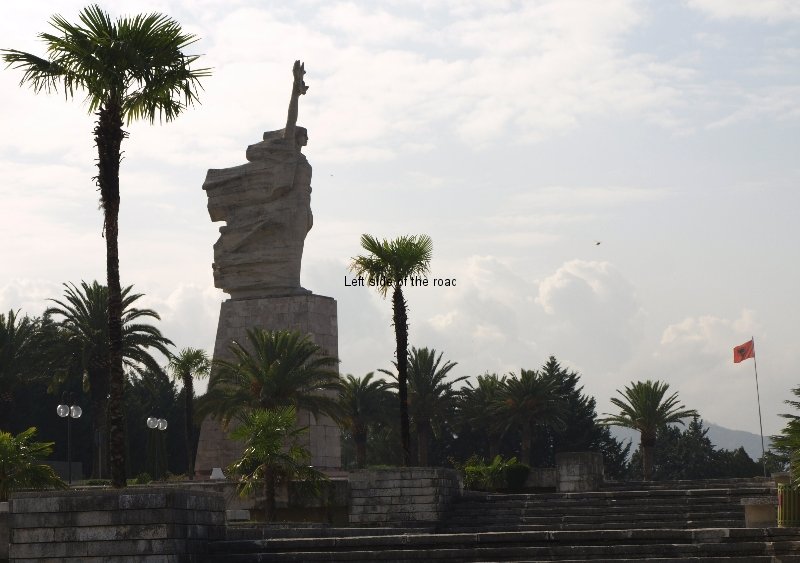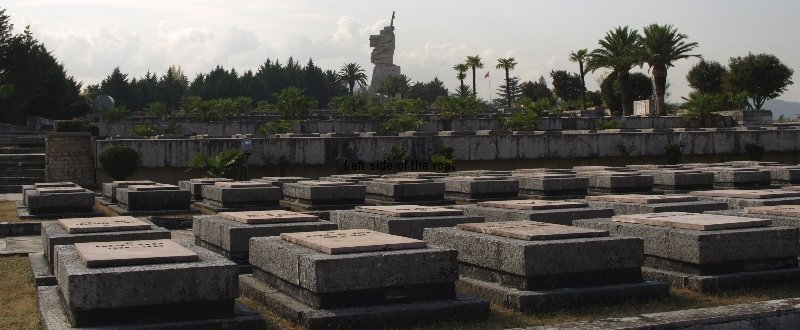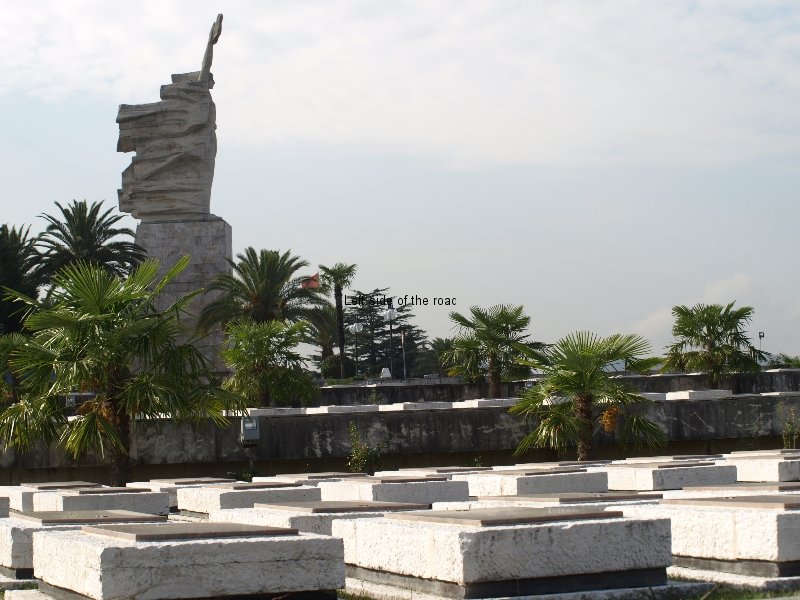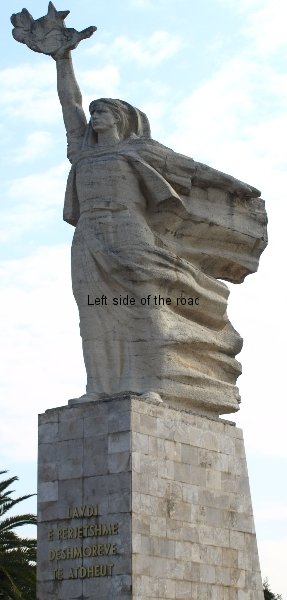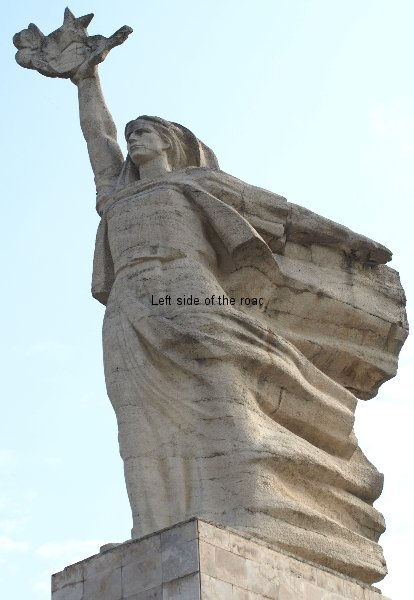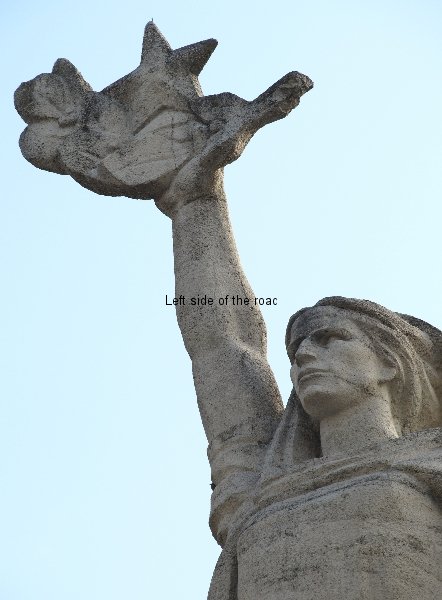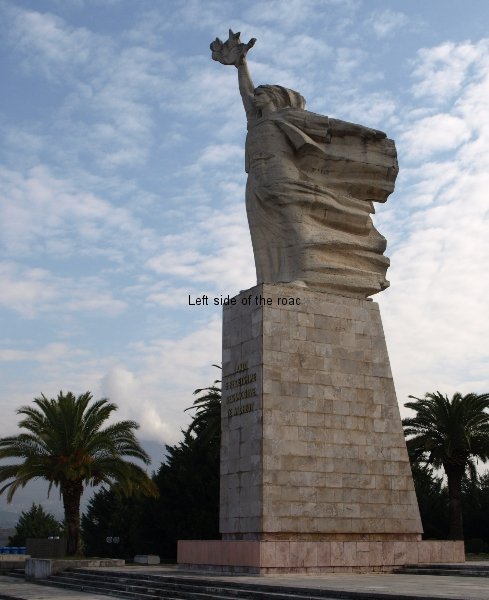
The Lathe Worker – Zef Shoshi
Ukraine – what you’re not told
This article first appeared in issue No 6, 1969 of the bi-monthly magazine New Albania which reported on the biennial exhibition of Figurative Art that was held in the National Art Gallery in Tirana earlier in the year.
(All the reporductions here are of works of art that were on display during the 1969 exhibition.)

The Dam of Drini – Nexhmedin Zajmi
The Revolutionary Spirit in Albanian Painting and Sculpture
The most important manifestation in the field of the Albanian figurative arts is the national exhibition which, as a rule, is held once in two years. This year its motto was the 25th anniversary of the liberation of Albania and it opened on the eve of this jubilee day.

Testing – 1969 – Andon Lakuriqi
The artists’ creative work in socialist Albania has been constantly expanding. We have now a great number of painters and sculptors who are not only professionally trained but have also proved their creative artistic capability. There is side by side with them a big army of amateur artists who also wants to make their contribution to the new socialist art. The Party of Labour of Albania has always paid special attention to the development of literature and arts, its main concern being that art should reflect the life of the people, that it should militate for communism, that it must have a revolutionary content. Our art which is realistic and deliberately tendentious finds this revolutionary content in the very reality of our socialist life.

Working Girls – 1969 – Bajam Mata
The national exhibition of figurative arts is of special interest from the point of view of the reflection in art of the all-round revolutionization of our society. The Albanian painters and sculptors have drawn inspiration from the life, work and thought of the working class of present-day Albania, the leading class of the revolution. In big tableau which sometimes assume monumental proportions and character such as Vilson Kilica tableau ‘The workers’,

The Workers – Vilson Kilica
Clirim Ceka’s painting ‘The technical scientific revolution’ there have been delineated in bright and light colours characters of workers in moments of their life and work in factories and plants. The painters have shown less interests in the simple everyday fact than in the great thought, which is inclined towards epics form, that the working class who is mastering theory and technique and who is the master of this country has reached the high peaks of science and is marching forward confident in its own strength. Joyful and fully optimistic is the life in our collectivized countryside as painted in Jusuf Sulovari’s tableau ‘The harvesters’.
The new look of socialist Albania which is forging ahead has inspired the painters to create beautiful landscapes, no more of an exotic character, but of a modem country which lives a happy intensive life. We see this in the landscape ‘500 new flats’ painted with compactness of style by Skender Topi.
The National Liberation War holds the main place in the creative work of the Albanian painters and sculptors. The more so would be the case with this exhibition.

Friends of the Mechanics Factory – 1969 – Dhimiter Mborja
In one of the main halls, one’s eye is struck by ‘The People’s Hero Vojo Kushi’ painting by Sali Shijaku.

The painter has been inspired by an event of the National Liberation War known to everybody. It is the moment when Vojo Kushi encircled with his three other comrades by the fascists in one of the Tirana slums before laying down his life for the freedom of the people threw himself upon a tank hurling a grenade to it. The painter’s image of the hero is that of a legendary figure amidst flames; his red shirt fluttering up like a banner which will remain such for centuries. Many paintings, sculptural groups, portraits and busts evoke moments, historic events or prominent figures of the glorious struggle of our people. Such is for example, the painting ‘The order from the staff’ by Hasan Nallbani which delineates the fighting and unyielding spirit of a brave partisan unit.

Farther (Me tej) – 1969 – Shaban Hysa
The revolutionary spirit prevailing nowadays over Albanian life, the great actions of the youth who are tempered while working for the construction of big projects, the selfless spirit to serve the people whenever and wherever need be, the high patriotic spirit to be ready to defend the fatherland from all enemies, all these lofty virtues instilled in our people during this quarter of a century could not but find their reflection in the works created by the Albanian artists. Shkurte Pal Vata was a very young volunteer girl from the highlands who died bravely at her post while working for the construction of the Rrogozhina-Fier railway. Her enthusiastic and romantic portrait has been lyrically and dynamically portrayed by the sculptor Mumtaz Dhrami.

Shkurte Pal Vata – Mumtaz Dhrami
Another valiant patriotic woman who had once commanded the fighters in the struggle against the foreign invaders and who fought all her life for the freedom and independence of the fatherland, is Shote Galica whose vivid and brave portrait we see cast in bronze by the sculptor Kristaq Rama.

People’s Heroine Shota Galica, Kristaq Rama
Likewise, the joyful life of our youth who are moulded in the great actions they undertake for the development of the socialist fatherland has been reflected in rich colours in the tableau ‘The return of the youth brigade’ by Dhimitraq Trebicka.

Guardians of the country – 1969 – Spiro Kristo
Many other aspects of our life have also been touched by the painters and sculptors. The national exhibition of the figurative arts is a manifestation of the flourishing of all kinds of plastic art starting with monumental painting and ending with various graphics. What is more, the 160 works displayed here and created by 110 artists have been selected among hundreds of works presented by authors of the whole country. The artists have not hesitated to face the difficulty of the work over big tableau or big sculptural groups, which thing has been dictated to them by the themes, thoughts and great epic ideas of the time they wanted to reflect. What is important is that they express themselves clearly by using such artistic means as are communicative and understandable for the broad masses. Basing their creative activity on the best traditions of the people’s art, by using a realistic style and guided by the revolutionary and optimistic tone of the life of their socialist fatherland, the painters and sculptors have created dynamic works, using various complete forms as well as rich and bright colours.

Danish Jukniu – In the light construction site
The works of this exhibition are the fruit of the socialist realism method far from any other decadent form content, or sickly subjectivism as is the case with the bourgeois and revisionist art. They are works which communicate with the people and whose aim is to serve the people and socialism.
For more examples of Albanian Socialist Realist Art the read about the 1971 National Exhibition of Figurative Arts – Tirana.
Socialist Realist Paintings and Sculptures in the National Art Gallery, Tirana provides a comprehenive idea of the examples of Socialist Art that have been on display in the National Gallery in recent years.













